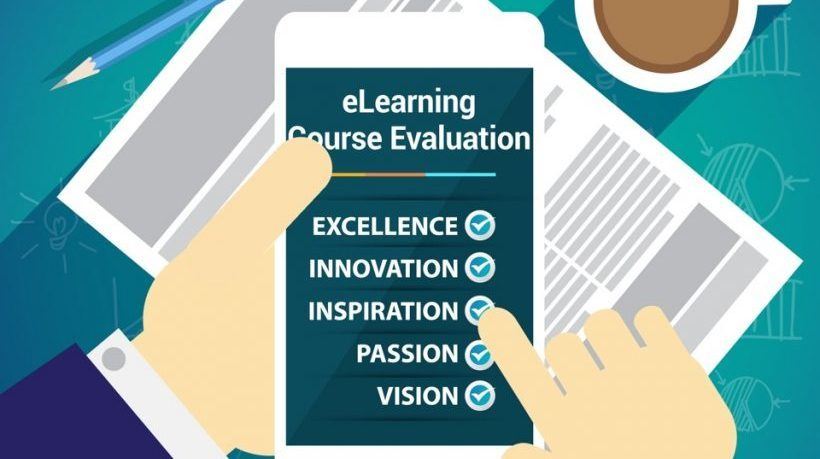How A Successful Transition To Online Course Evaluation Increases Student Responses
Student online course evaluation is a collection of valuable feedback, which holds the answer of whether the programs or the courses are effective, or they need an immediate change or betterment.
Feedback Loop
Feedback is vital to identify the strengths and weaknesses of the courses, programs, and faculty instructions. Finishing the course evaluations permits the faculty, department heads, and deans to know about the experience in the classroom. The most effective method to maintain high-quality response rates is to make the evaluation, part of the course. Simply administering a mid-semester course evaluation, and providing the results and the plan of action based on the feedback will dramatically improve response rates at the end of the year. The main aspects considered during the evaluation are relevance, efficiency, efficacy, utility, and sustainability.
Student Responses
Course evaluation is used to improve the quality of teaching and learning through feedback to both individual faculty members and promotion committees. Course evaluation provides information regarding students’ and the instructor’s behavior, and about the course. Responses also serve as one measure of the quality member’s teaching that is used to evaluate faculty for promotion and tenure. Students play an integral role in the academic life through the participation in the evaluation of the faculty.
Instructor-Driven Strategies Increase Online Student Evaluation Response Rates
Goodman, Anson, and Belcheir surveyed 678 faculties across a range of disciplines, asking them to report how they were trying to boost online response rates. Among those surveyed, 13% reported that they did nothing to improve the rates and that, on average, 50% of their students completed the forms. Those who did something to encourage students to complete the evaluations generated response rates of 63%. The most common approaches faculty reported were the ones we’d expect. They reminded students to complete the forms, which upped the response rate to 61%, and they explained how the results helped them improve instruction, which bumped the rate up to 57%.
Case Study: University Of Washington
The University of Washington's Paper Reduction Committee recommended online course evaluations in UW to reduce its use of paper, and save thousands of dollars every year, while giving faculty and administrators more direct access to evaluation results. As per UW, the current total cost of the paper evaluation is about $1, 50,000 annually. By eliminating paper, nearly $75,000 will be saved in a year, and about a quarter million sheets won’t have to be recycled.
3 Ways To Use Online Course Evaluations
The evaluation is used in 3 different ways:
- Faculty use them to help improve their teaching.
- Departments use them to evaluate faculty that includes merit, promotion, and tenure decisions.
- Students can check out the course evaluation catalog to determine if they want to sign up for certain class.
Problems With Paper-Based Course Evaluation
- Numerous institutional cost.
- Compiling results and students comments – requires substantial investment of staff time and resources.
- Course evaluations in the classroom – limits the amount of time and requires devoting a portion of class time to complete it.
- Students couldn’t convey their thoughtful comments.
Transitioning To Online Course Evaluations
There is a systematic tendency for online course evaluations to be higher than paper evaluations with higher response rates. Here are some of the benefits:
Advantages
- Substantial savings to institution.
- Less turnaround time to deliver results.
- Increased capability to perform statistical analyses.
- Substantive feedback from students.
- Pros and cons of online course evaluation system.
- Immediate results.
- Less probability of getting errors.
- Not time-consuming.
- Less costly.
- Go green.
- More student comments.
- Flexibility for questions.
- Less time intensive for administrators.
Paper responses are significantly, and practically, lower than online responses. Here are some of the negative differences:
Disadvantages
- Can also have lower response rate.
- Concerns about confidentiality and anonymity.
- Students’ who have not attended the classes will get an option of giving opinions.
Conclusion
By considering the above points, online evaluations of teaching are a suitable alternative to the paper-based evaluation. Higher education institutions have started transitioning from paper and pencil student-rating forms to online evaluation systems. Faculty and university administrators who are considering this online implementation should have well-defined plan to yield the optimized results. In order to maximize the student response rates, the administrators of online evaluation need to communicate effectively with the faculty members who are being reviewed, so that in turn they can communicate with students, and improve their participation.
Adopting a system of online evaluation will build cost effectiveness, environmental friendliness, time efficiency, and availability of robust analytical techniques. The online evaluation system should be considered as a viable alternative to the paper-based approach provided faculty members and administrators of the universities agree to promote student participation.
References:
- A Comparison of Web-Based and Paper-Based Course Evaluations at UNC Charlotte. A report prepared by the Center for Educational Measurement and Evaluation & the Center for Teaching and Learning (2011)
- Rationale for a USM Electronic Course Evaluation by Susan King, Director of Academic Assessment, April 2013
- Goodman, J., Anson, R. and Belcheir, M., (2015). The effect of incentives and other instructor-driven strategies to increase online student evaluation response rates. Assessment & Evaluation in Higher Education, 40 (7), 958-970.
- Assessment & Evaluation in Higher Education, 40 (7), 958-970.
- UW moving to online course evaluations to save paper, money
- 6 steps to improve teaching and course quality based on student evaluations








